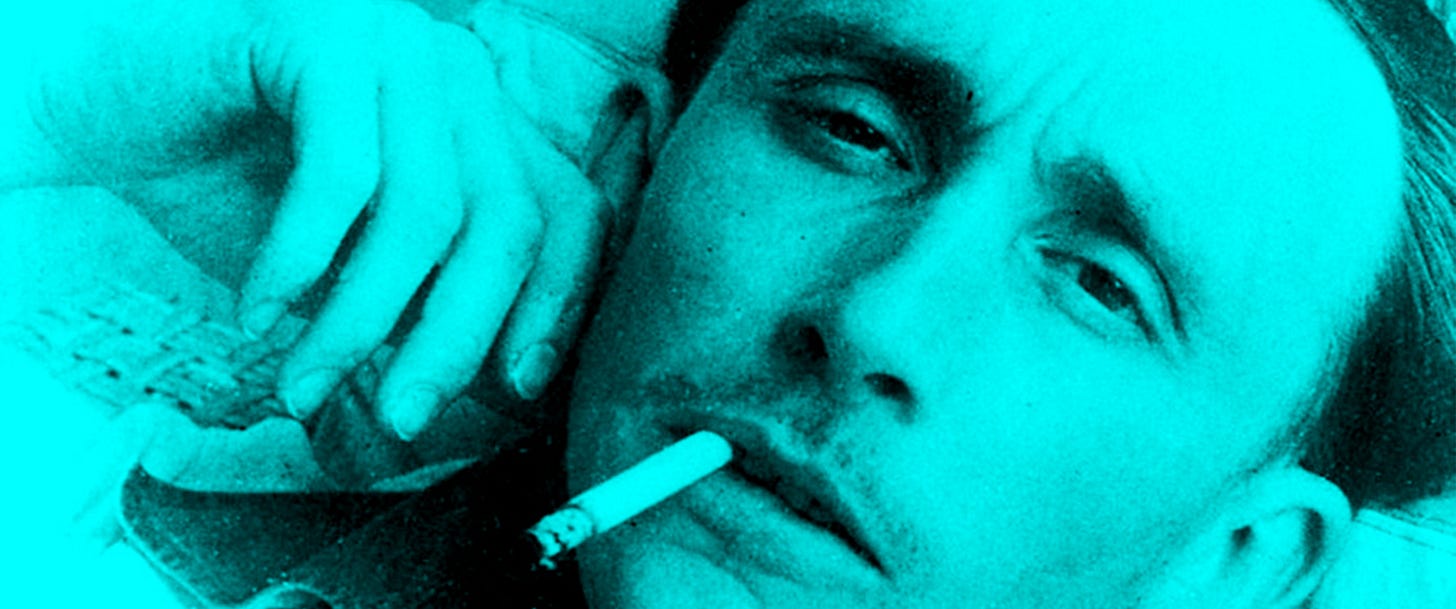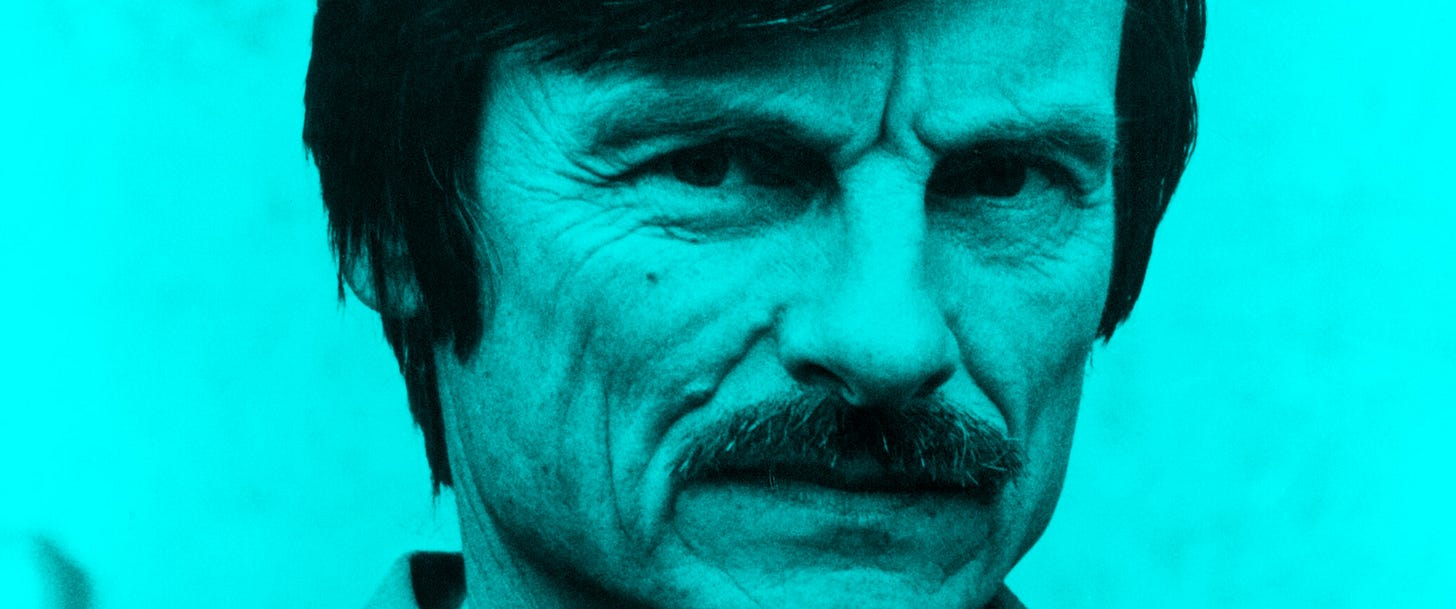Time-Space and Slow Cinema
(Slow) cinema as a penultimate attempt to the total depiction of reality
In his early foundational essay, “The Ontology of the Photographic Image,” French film theorist and critic André Bazin (1967) wrote that humans have an intrinsic psychological desire to trick the inevitable passage of time. He referenced this to the ancient practice of early Egyptians of mummifying their dead. This tradition, Bazin posited, “lays bare the primordial function of statuary, namely, the preservation of life by a representation of life” (pp. 9-10). Following this, he continued to compare it to plastic arts and paintings. These forms of visual arts followed the motivation of embalming. Consequently, the arts, was torn between beauty and deception:
The quarrel over realism in art stems from a misunderstanding, from a confusion between the aesthetic and the psychological; between true realism, the need that is to give significant expression to the world both concretely and its essence, and the pseudorealism of a deception aimed at fooling the eye (or for that matter the mind); a pseudorealism content in other words with illusory appearances. (Bazin, 1967, p. 12)
This obsession of realism and the sin of achieving it was redeemed with the advent of photography. For the first time, humans were able to embalm reality and reproduce it more than its mere approximation. As Bazin (1967) puts it, “the image of things is likewise the image of their duration, change mummified as it were” (p. 15). This understanding of the ontological realism of the image and the petrification of time through photography becomes more pronounced with the advent of cinema. To quote from Le Petit Soldat (1963) by French Nouvelle Vague pioneer Jean-Luc Godard, “Photography is truth. The cinema is truth twenty-four times per second.”
The invention of motion picture apparatuses—those pioneered by Edison’s Kinetoscope and the Cinématographe of the Lumière brothers—made it possible not only to capture a moment but to preserve a quick series of moments that gives the illusion of movement, hence, a motion in pictures. This technological innovation revolutionized our common sense of time as an irreversible progression of successive occurrences. While it is still humanly impossible to travel back in time, cinema made it possible to “re-view” the past without the need to be physically in it. As Russian filmmaker Andrei Tarkovsky says, “Cinema fixes reality in a sense of time—it’s a way of conserving time. No other art form can fix and stop time like this” (Baglivo, 1984). To reiterate, cinema treats time as something that can be kept, a reality that can be fossilized in the flesh of celluloid, protected against the inescapable decay of time.
A film, Tarkovsky adds, is a “mosaic made of time”—the editing or assembly of shots which are inherently filled with varying temporality (Baglivo, 1984). Meaning, a shot is in itself a time made visible by its internal rhythm. Tarkovsky (1987) argues that rhythm cannot be a product of editing, as what montage cinema expresses, but is determined by “maintaining the operative pressure, or thrust, [that] will unify the impact of the different shots” (p. 117). This so-called pressure is carried by the life of the objects being observed or recorded, i.e. people waiting for the arrival of a train and workers walking out of a factory. In other words, it is conveyed by a real sense of time that is not necessarily objective to actual time, but it is a quality “in response to the director’s innate awareness of life” (p. 120). The early films of Auguste and Louis Lumière are prime examples.
The medium shot of Baby’s Meal [Repas de bébé] (1895) frames two adults feeding their baby seated between them. The spectacle is mundane yet original for the fact that the Lumière brothers were the first to do it, to record an awareness of a life event, albeit ordinary, in film. Thus, despite being a continuous shot, the one-minute film carries with it a rhythm, a thrust, that manifested when the baby offered her biscuit to someone outside the frame. The innocence of the child is captured, tolerated even, rather than concealed by a cut of a different shot or angle. Although, of course, montage was not yet realized at this time, the important observation here is the authenticity of life was permitted to be exposed. A closer look to the background, moreover, will highlight the shot’s sense of time translated in the subtle rustling of the trees, a time-pressure tethered with the characters’ corporeality in his environs. The spectacle of this film along with other Lumière actualités, then, was not essentially obtained from technique, but from lived experiences of reality and the urge to reproduce them.
The other component that is inalienable of time and equally immanent to cinema is space. Space is essential in the understanding of time because it is where the latter exists, is measured and therefore realized. On that account, my aforementioned discussion on time implies the involvement of space because, and I cannot stress this enough, they are fundamentally linked together and therefore inseparable. This union is the essence—the ontology—of cinema, and I will reason that this coupling is best realized in slow cinema.
Slow cinema is a branch of art cinema that radically veers off the conventions of the classical narrative. Since the time of Ozu, Bresson, and Deyer, it has become more and more ubiquitous with attempts to apply its style in modern films like the stillness and minimal dialogues of A Ghost Story (2017) and the long takes of the monochromatic Roma (2018). Still, the aesthetics of the genre receives its fair share of praises and criticisms.
Among the distinctive traits of slow cinema include, but are not limited to, long takes, wide shots with deep focus, minimal camera movements, and use of diegetic sounds. However, these trademarks are not necessarily present in every slow film. Slow cinema directors can employ certain techniques with more austerity while reducing the necessity of others, but however they mix and match their choices, “long take is the sine qua non of slow cinema” (Shrader, 2018, p. 11). These are not merely the long dollies and trackings used by Orson Welles in Citizen Kane (1941), by Martin Scorsese in Goodfellas (1990), or the trendy “single take” tricks done by Alfred
Hitchcock in Rope (1948), then in Alejandro Iñárritu’s Birdman (2014) and Sam Mendes’ 1917 (2019); but these are the six-minute static shot of a woman sitting and crying in Tsai Ming-liang’s Vive L’Amour (1994) and the twelve-minute uninterrupted tracking shot of a character walking in Lav Diaz’s Evolution of a Filipino Family (2004). Tsai and Lav are two of the directors Paul Schrader (2018) categorized under Surveillance Camera—a non-narrative cinema directed to record everyday reality—in which I will be focusing on, particularly on the treatment of time-space in slow cinema vis-à-vis realism.1
In his “Time and Sense in Cinema,” Sesonske (1980) introduces cinema time and cinema space. The latter entails two aspects: the screen-space that occupies the two-dimensional screen (frame); and the action-space or the three-dimensional space that exists within the screen-space, or simply, the world where the characters and events exist and occur. The former is likewise dichotomized: screen-time pertains to the duration of the film as experienced in natural time (time in the spectator’s world) while action-time refers to the time that runs in action-space. I will refer to these definitions although the study on time is bounded only on the duration of shots (i.e. long takes), and space is delimited on the employment of wide shots (and deep focus), choice of locations, and the physicality of characters.
Read the full paper here where I studied the spatiotemporal aesthetics in the films of Tsai Ming-liang (Taiwan) and Lav Diaz (Philippines), and discussed the possible direction of (slow) cinema toward a total representation of reality.
See Schrader elaborates the other two directions in “Rethinking transcendental style” from the 2018 edition of his book, Transcendental style in film.





